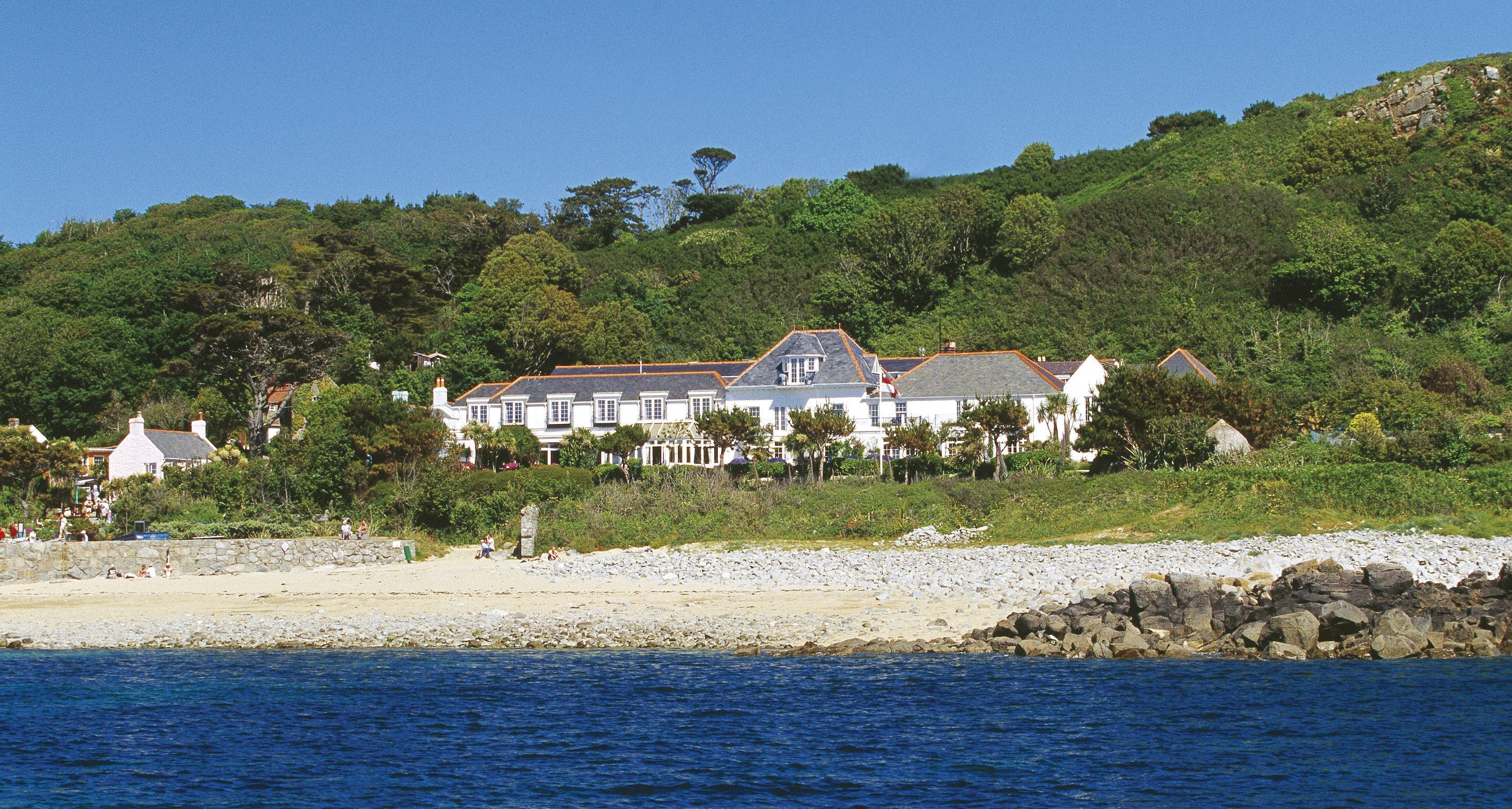
6 minute read
HauteTRAVEL
BY BECCA HENSLEY
A TRIP TO STORYBOOK GUERNSEY AND SARK
Discovering the charm of the Channel Islands
ARE WE DRESSED APPROPRIATELY TO MEET A SEIGNEUR?
That’s what my friend Jenn and I wonder, as we cling to the side of a small boat, bouncing amid a tumultuous sea. We’re headed to Sark, a tiny island in the English Channel. It’s described in literature as a royal fife. We’re not completely sure what that means in today’s vernacular, though it conjures images of feudal lords, Rapunzel-length hair, and mythical feats. In fact, the self-governing island has its own set of laws and parliament. One of the smaller islands that comprise the bailiwick of Guernsey (a group of islands which form a district within the Channel Islands), it has history that dates back to Neolithic times, including colorful habitations by Romans, Vikings, corsairs, and beekeeping, elixir-making monks. Measuring just two-square-miles-round, it allows no cars. Instead, its 400 residents use horses, battered bikes, and tractors, the last of which, like a vintage toy, pull the fire engine and ambulance when needed. Flecked with ancient cottages, a tiny village, and pint-sized farms, sleepy Sark has clumps of forest, soaring seaside cliffs and moldering stone walls that edge snaky dirt lanes. Just one policeman, one doctor, and one school suffice. The occasional church tower or old mill rises from its fields. Nooks and niches abound. In short, this hideaway smacks of fairy tales.
St. Peter port
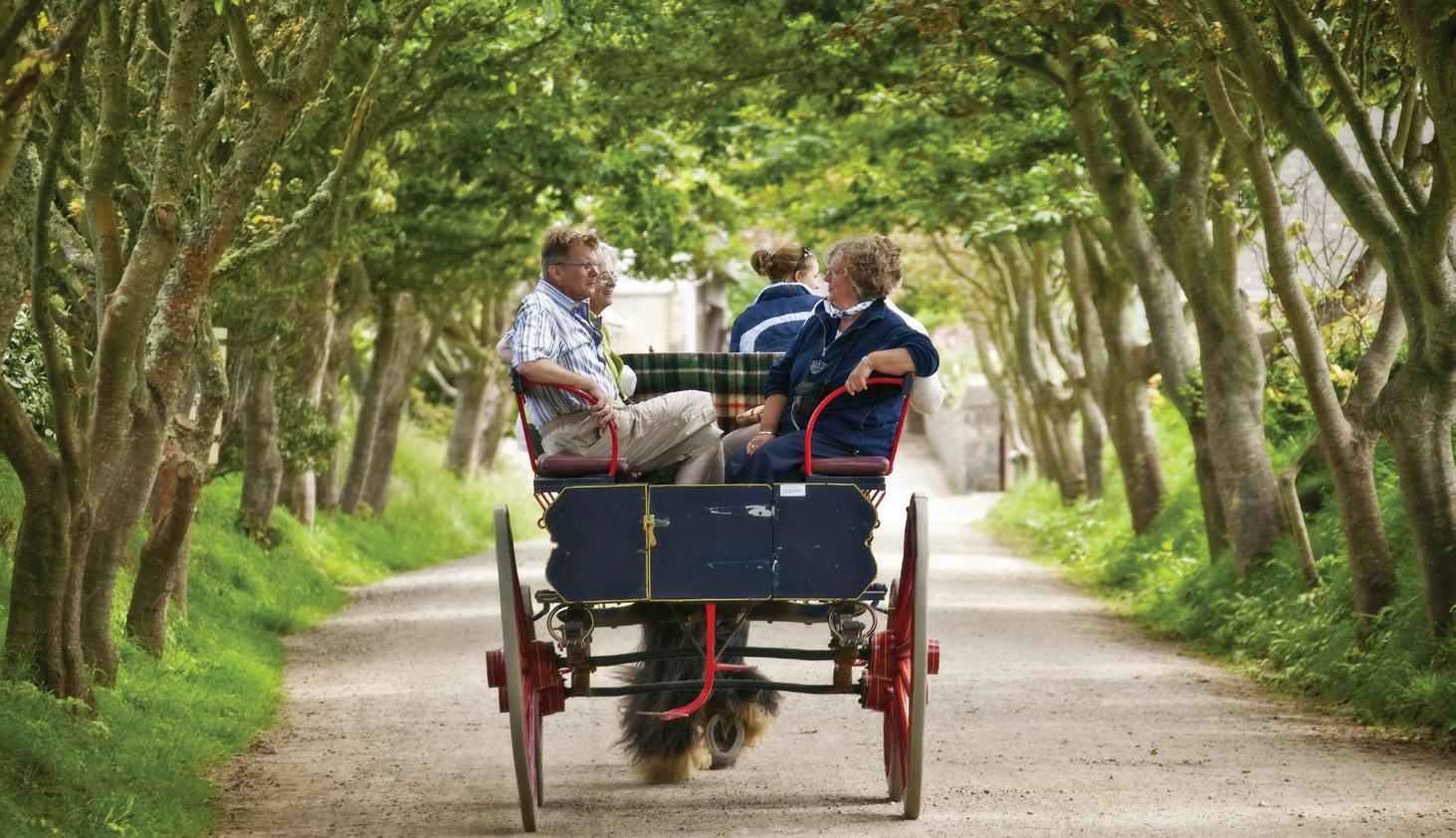
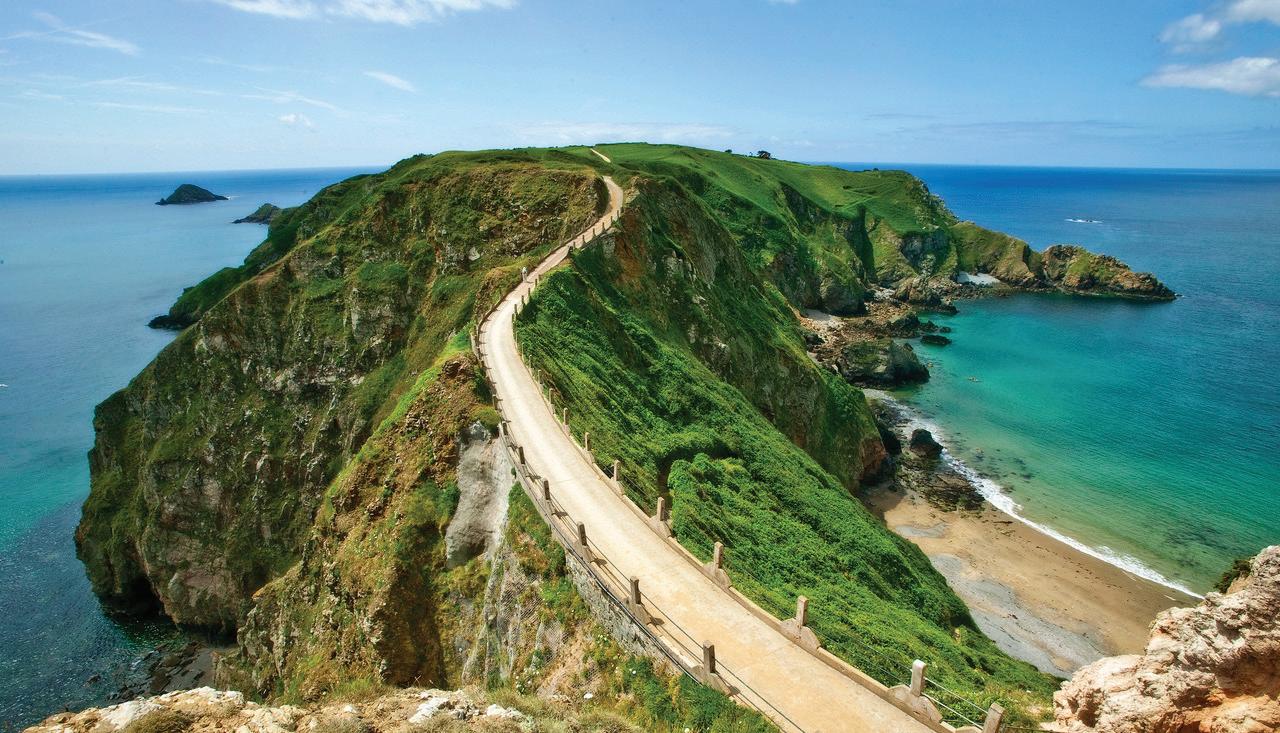
But, that’s not the end of our story.
We’ve come to visit Christopher Beaumont, Seigneur of Sark, who lives in a turreted and crenelated ancestral home. What’s a seigneur? You might call him the governor or president of Sark, the official “conduit” for his constituents. He claims his domicile has ghosts, and hints at a witch, which, he says, sometimes be-straddles the rooftop. His legendary family, composed of pirate heritage, bygone artist stock, merchants, landholding gentry, and a brave, Nazi-fighting grandmother (known as Dame Sybil Hathaway), has lorded over this island, and lived on this estate for centuries. To find his house, we disembark the utilitarian ferry, grab some bikes, and pedal through a fantasia of hedge row-rimmed, rugged cliff-fringed, cow-filled fields. When we inevitably get lost, a kindly resident (perhaps an elf?) points the way, mouthing these enchanting instructions: “Stroll across two meadows, cross a bridge, turn at the big tree, follow the wall—until you reach the manor house.”
He might as well have told us to beware the dragon.
Mark my word: one day on Sark, Europe’s last feudal state (since 2008, its newest democracy), is not enough. In a flurry, we eat lunch at family-owned Stocks Hotel, once a 16th-century farmhouse, visit beaches with evocative names like Derrible Bay, and moan in awe at views from Window in the Rock, a natural stone frame that showcases the sea. Playing residents, we nab the local taxi—a horse and buggy—to visit the eye-catching isthmus that connects Sark to Little Sark, a tinier islet. Narrow, harrowing, with no room for error, the bridge-like rock formation drops nearly 300-feet straight to the sea. Apparently, in former times, the perpetually windy weather meant children had to crawl across on their hands and knees to keep from being blown into the sea.
We don’t crawl across, but we do have a moment of panic when a tractor comes plowing toward us, taking up the entire road. In trepidation, we cut short our admiration of the view, flail our arms and screech in horror. Dramatically, we cling to the precipice’s very edge. Undaunted, the tractor roars on, the driver grinning with amusement. He knows exactly how much space he needs, and that we’ll survive. Unscathed we laugh hysterically, drunk with the adventure.
Later in the day, when it’s time to catch the last boat back to Guernsey, we’re running late. Diminutive Sark has myriad distractions between its plentiful nature and charming shops. “Surely, the ferry won’t leave without us?” we say, as we race down a steep hill toward the dock. “After all, we know the seigneur; he’s given us tea!” (I admit we suffer from some entitlement, thanks to our brief audience with the island’s leader.) In the end, we reach the ferry in plenty of time. We watch as the boatmen unload a cache of supplies for Sark’s few inhabitants, most notably a beribboned, child-sized, play kitchen for a little Sarkian’s birthday.
Sark stands out as a most appreciated field trip. But, we have come to the Channel Islands, specifically Guernsey, in the first place, with visions of The Guernsey Literary and Potato Peel Pie Society dancing in our heads. If you’ve read the book (co-authored by Mary Ann Schaffer and Annie Barrows) or seen the popular film adaptation, then you’ve likely yearned to visit yourself. The story about love and hardship in the aftermath of World War II (following years of German occupation) continues to woo tourists who discover an unspoiled destination, peculiarly quaint and gratifyingly frozen in time.
Self-governing, a mélange of both French and English characteristics thanks to its location between the two nations, Guernsey has been historically rogue and independent—though after William the Conqueror, it swore allegiance to the British crown. Home to buccaneers, displaced nobles, farmers, and mariners, it attracted artistic characters like Victor Hugo—who wrote from his eccentric home, Hauteville House, which vaunts surreal interiors he designed himself. Or, Auguste Renoir—who painted from its wind
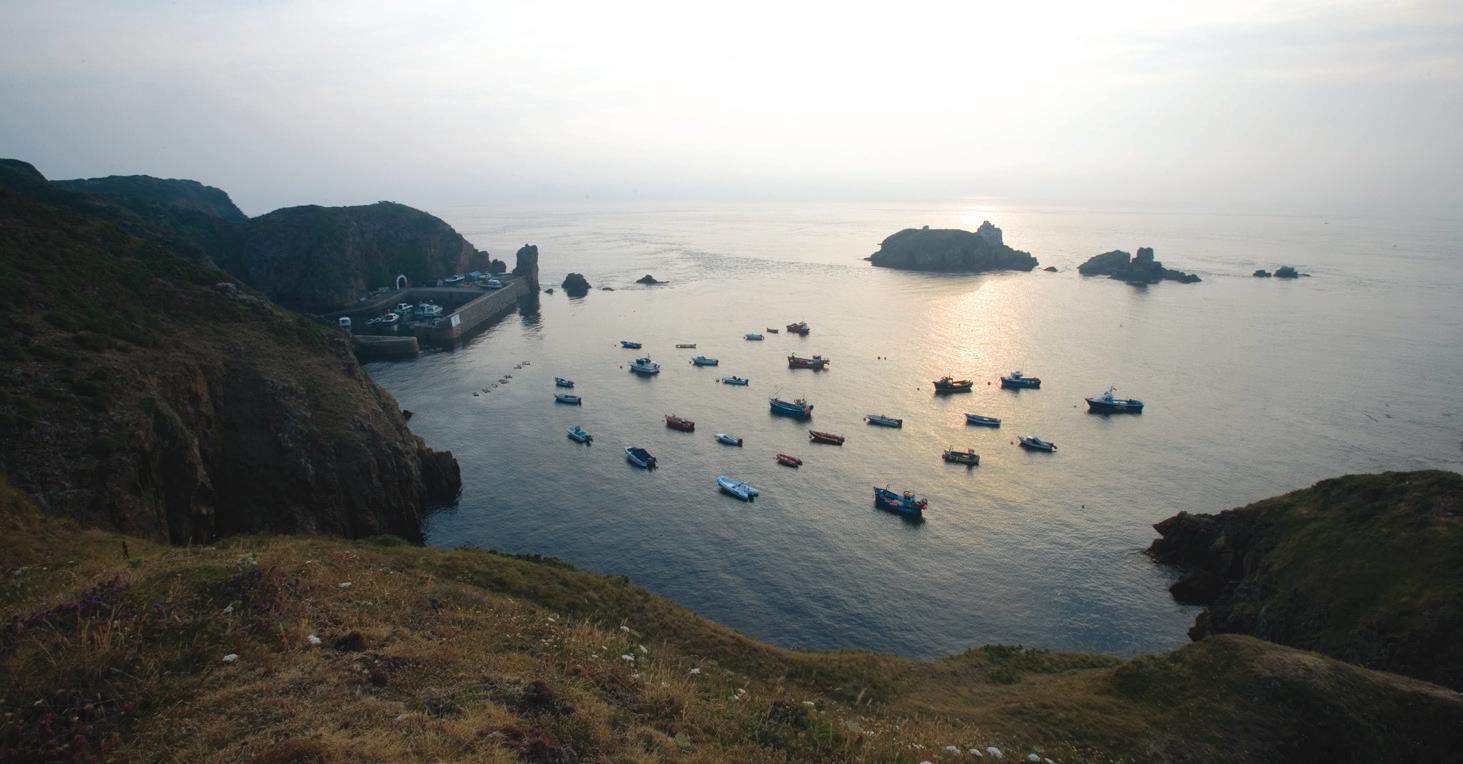
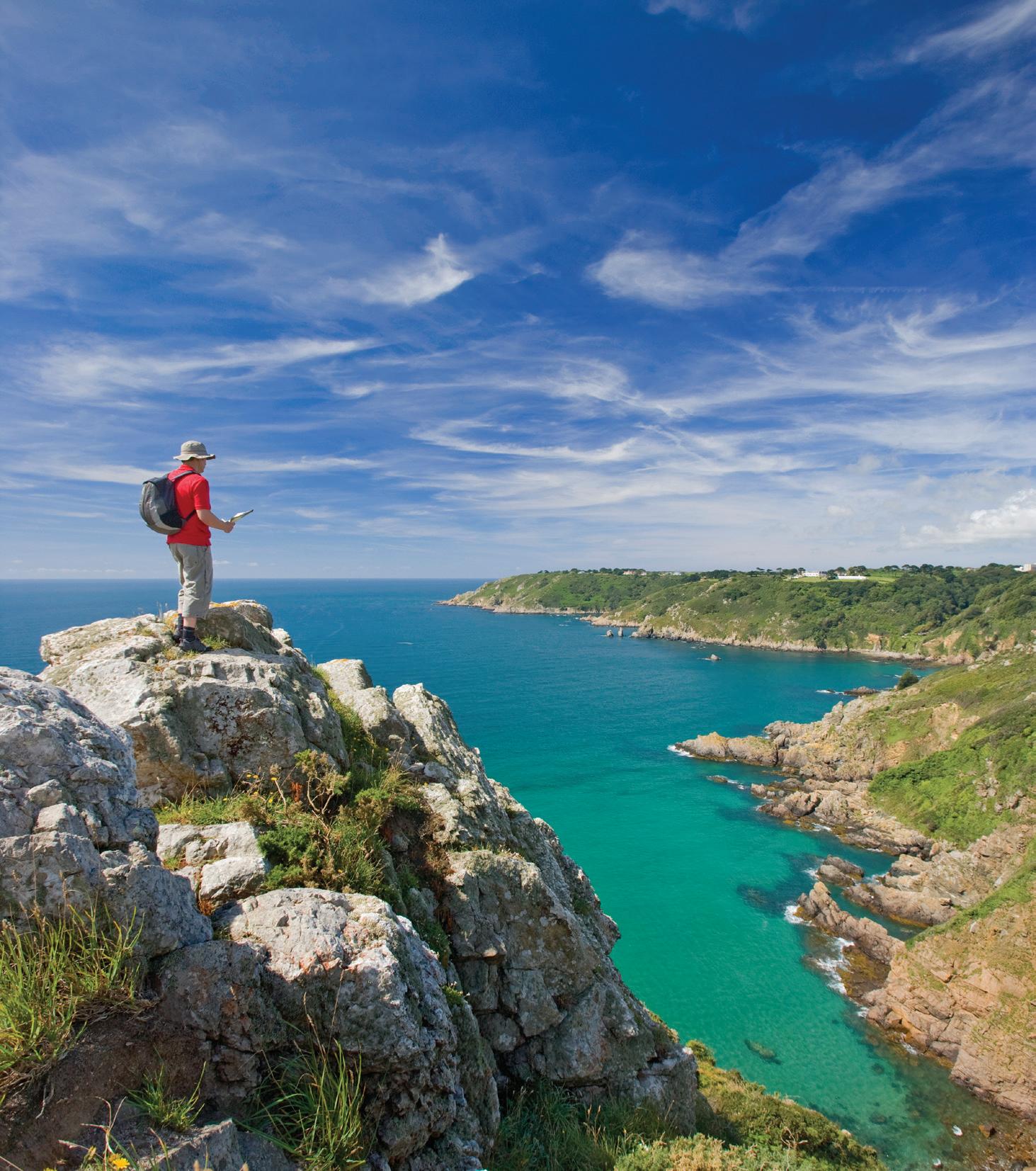
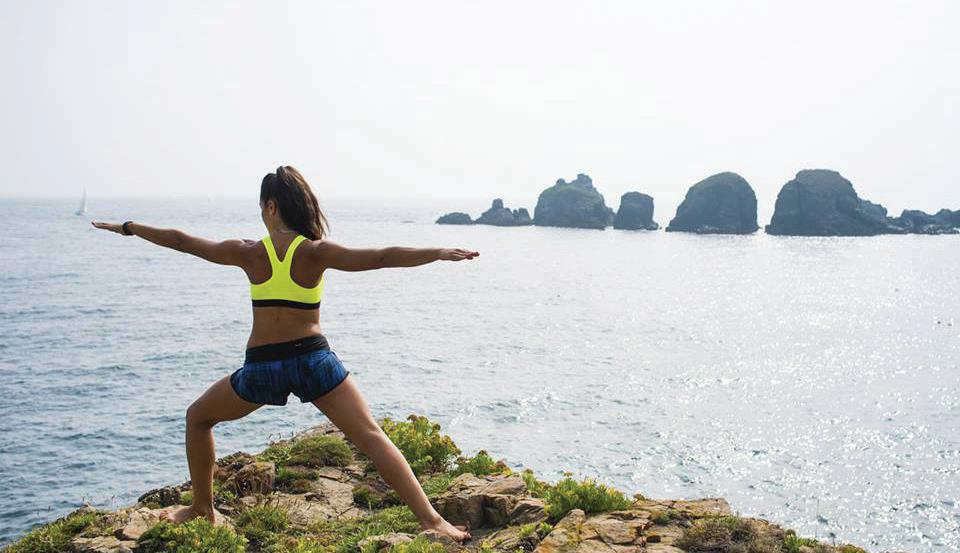
HauteTRAVEL


swept cliffs. With bucolic meadows, some 27 bays, craggy cliffs, and an appealing capital, St. Peter Port, complete with a warren of cobbled streets, a centuries-old castle, and Regency architecture, Guernsey exudes as much a storybook quality as Sark—albeit buzzier, bigger, and more urbane.
Gastronomes will be drawn by its dairy goods (butter from its special, spotted cows), artisan spirits (including a unique gin infused with local rock samphire, a succulent which grows by the sea), shellfish (an abalone-like mollusk called ormer), classic cream teas, and “veg hedges” (little stalls, wedged in the hedgerow, that sell garden goods via honor jars). History buffs will swoon over Guernsey’s Neolithic monuments and World War II memorabilia (the island’s occupation resulted in numerous bunkers and extant artifacts—even a haunted hospital). Outdoor enthusiasts can hike the cliffs, surf, dive, or golf, while true adventure fanatics should try “coasteering,” which involves adrenalinecharged leaping, cave-exploring, scrambling, rappelling, hiking, and swimming to make one’s way along the coastline.
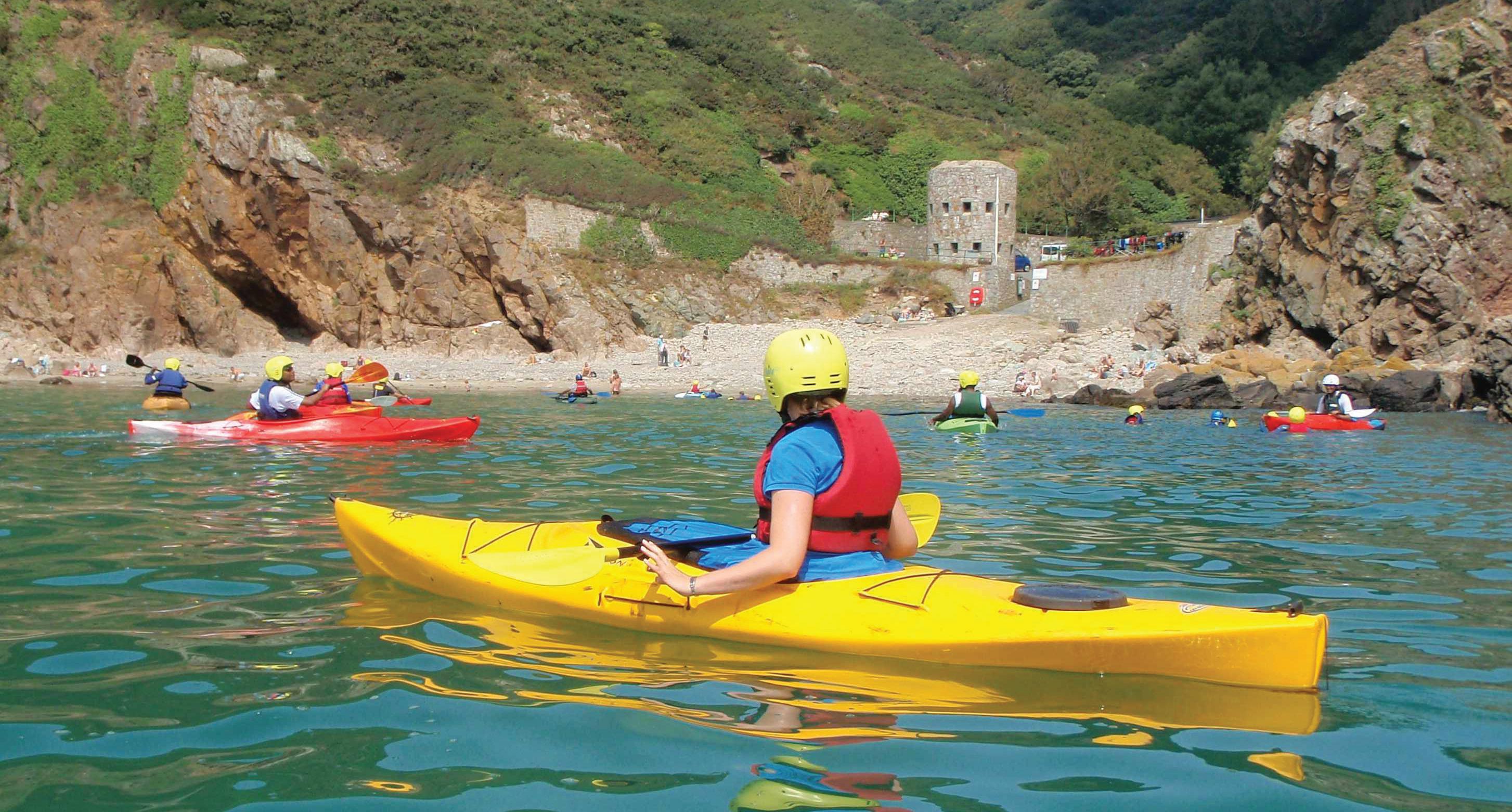
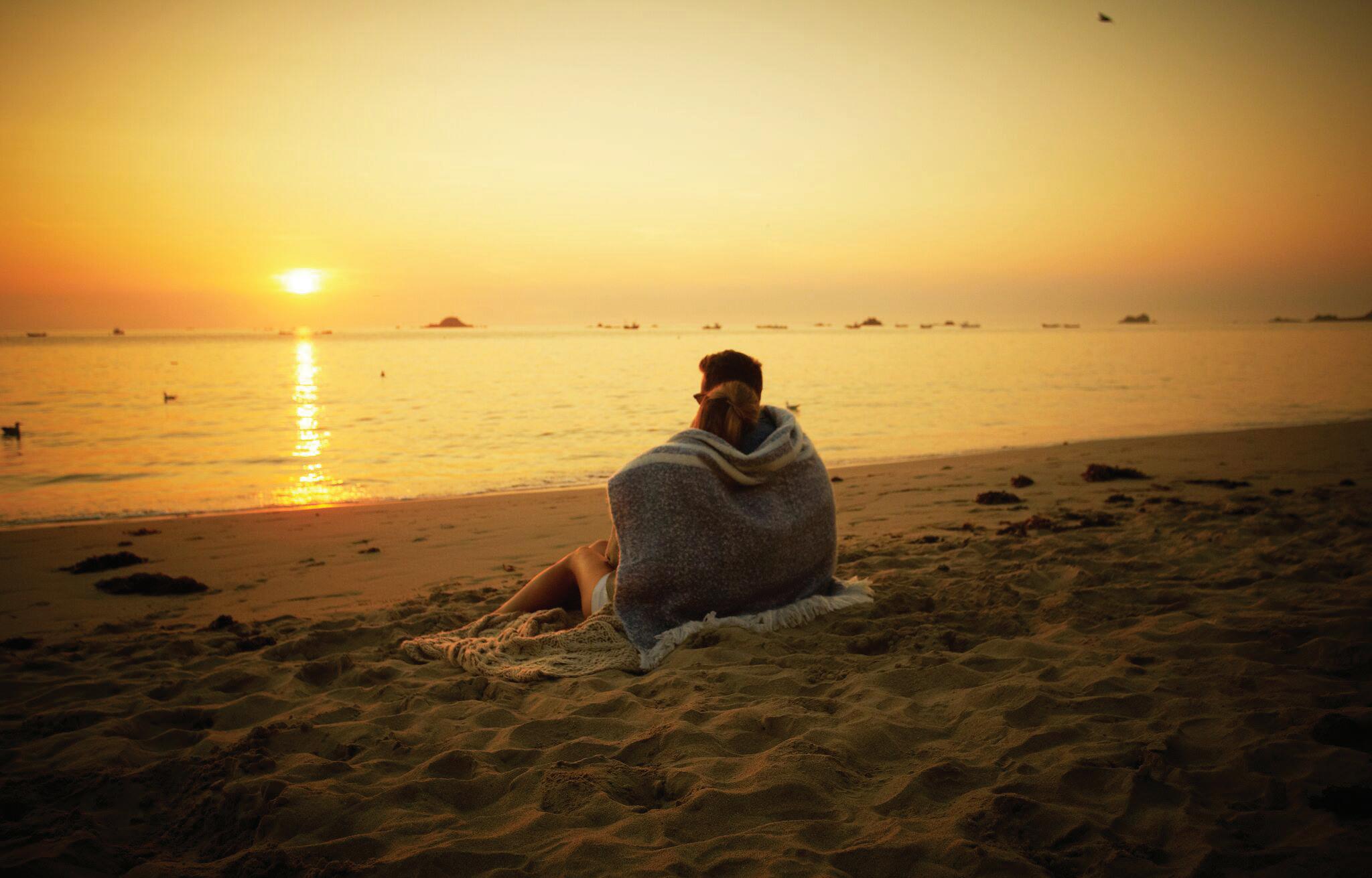

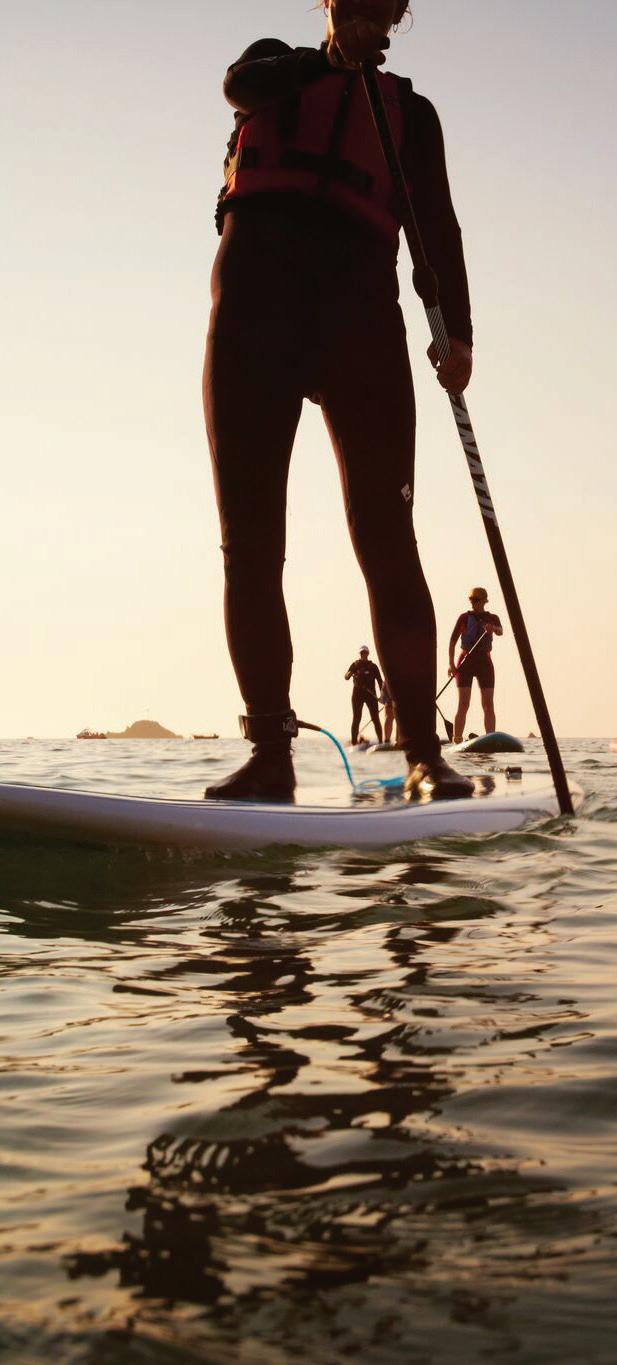
Unlike some homage trips to literary or film sites, Guernsey actually delivers what readers harbor in their imaginations. We half-expect to see fictional characters biking alongside the hedgerows or picnicking on the beach. However, (spoiler alert), the movie wasn’t filmed here, and the book’s author had visited only once. Nevertheless, as local tour guide extraordinaire Gill Girard puts it: “They got things remarkably right.”
The best way to immerse in “Potato Peel Pie” fun is to drive or walk the city with Gill, an award-winning, gold guide and the person named consultant on local history and customs for the film teams. If anybody knows what to wear when meeting a seigneur, it’s Gill. “He’ll take you as you are,” she says, winking, when I ask.
Is there a recipe for potato peel pie? To find out, you’ll have to visit Guernsey. Gill will know.
